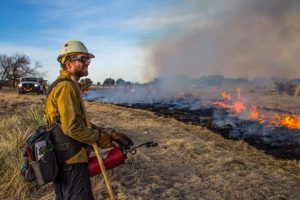Discover stories in Forests
The Logging Industry Can Help Protect Tropical Birds
Well-managed logging concessions can play a critical role in species conservation. A new study quantifies the conservation responsibility of the […]
Where There’s Smoke: Wildfire, Forest Restoration and Human Health
A new paper argues forest health and human health should not be viewed as separate concerns when it comes to wildfires.
Protecting and Restoring the Floodplain Forest
Floodplain forests are among the most biologically rich habitats, but they’re critically imperiled.
The Jumping Slugs of the Pacific Northwest
Meet the strange slugs that do a breakdance for defense.
Wildfire Resilience Treatments Work
With the western United States facing increasingly severe fires and a megadrought, active forest management offers a more resilient future.
Fossil Pollen Reveals the African Origins of Asia’s Tropical Forests
Fossil pollen reveals that the iconic tree family of Borneo's rainforests — the dipterocarps — evolved in Africa.
The Mysteries of the Ponderosa Pine
Take a look at the ponderosa pine and the many creatures that rely on it.
Planting Trees in Pasturelands Keeps Things Cool
Farmers in the tropics can harness the cooling benefits of tree cover by incorporating trees within their pasturelands.
Tropical Deforestation May Reduce Safe Work for Millions
Deforestation reduced safe work hours for more than 4.9 million people across the tropics.
When Wildfire Comes to Nature Conservancy Preserves
This year, wildfire affected dozens of Nature Conservancy preserves. How did they fare?
Deforestation Is Killing Workers in Tropical Countries
New science estimates that heat increases caused by deforestation are killing more than 100 people per year in Berau, Indonesia.
Kouprey: The Ultimate Mystery Mammal
Do you know the kouprey? Meet the forest ox shrouded in mystery and rumor.











